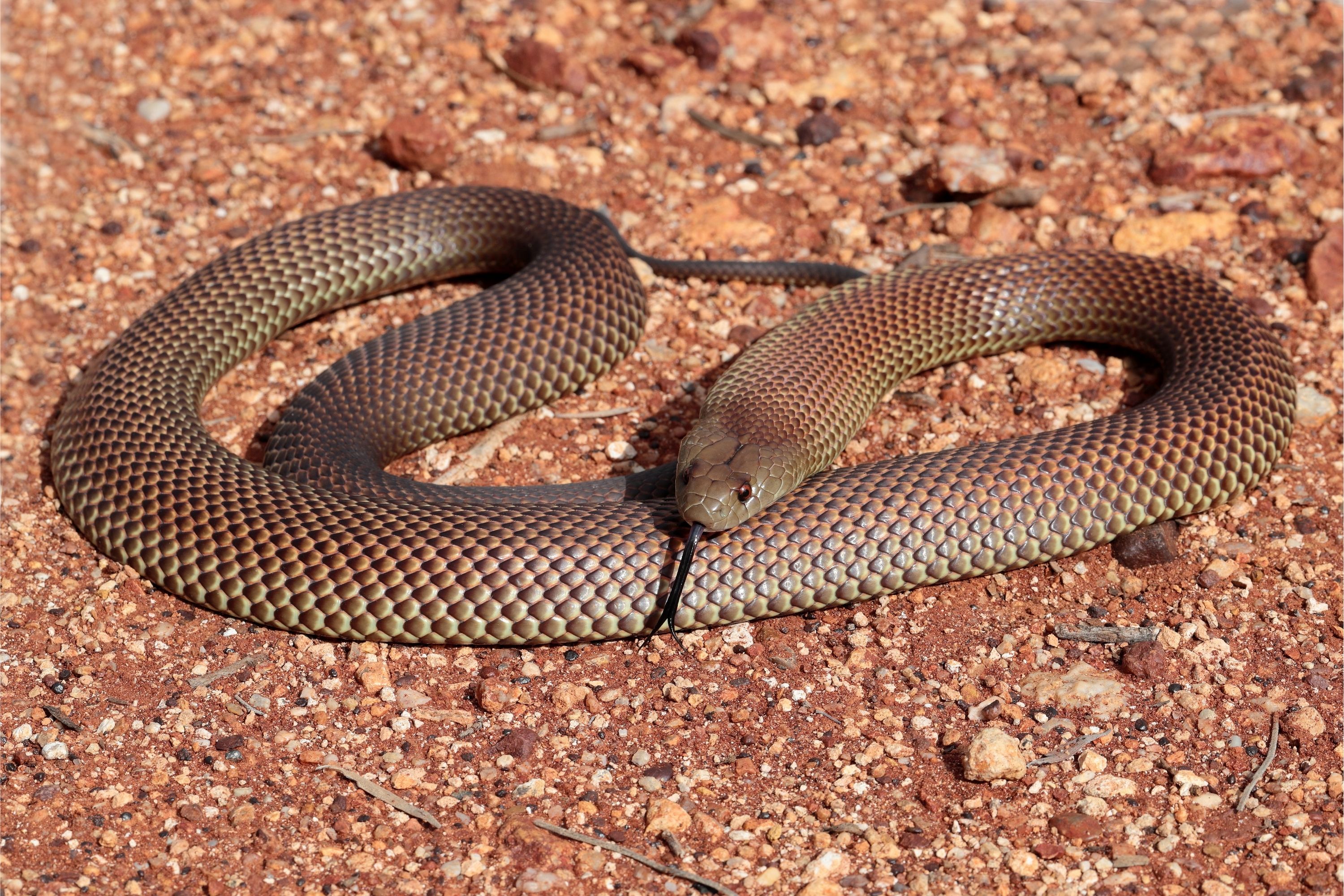King brown snake
(Pseudechis australis)

Description
The king brown snake (Pseudechis australis) is a species of highly venomous snake of the family Elapidae, native to northern, western, and Central Australia. Despite its common name, it is a member of the genus Pseudechis (black snakes) and only distantly related to true brown snakes. Its alternative common name is the mulga snake, although it lives in many habitats apart from mulga. First described by English zoologist John Edward Gray in 1842, it is a robust snake up to 3.3 m (11 ft) long. It is variable in appearance, with individuals from northern Australia having tan upper parts, while those from southern Australia are dark brown to blackish. Sometimes, it is seen in a reddish-green texture. The dorsal scales are two-toned, sometimes giving the snake a patterned appearance. Its underside is cream or white, often with orange splotches. The species is oviparous. The snake is considered to be a least-concern species according to the International Union for Conservation of Nature, though may have declined with the spread of the cane toad. Australia's largest venomous snake, the king brown snake can reach 2.0 to 2.5 m (6.6 to 8.2 ft) in length with a weight of 3 to 6 kg (6.6 to 13.2 lb), with males around 20% larger than females. The longest confirmed individual was 3.3 m (11 ft) in length. The king brown snake is robust, with a head slightly wider than the body, prominent cheeks and small eyes with red-brown irises, and a dark tongue. The head is demarcated from the body by a slight neck. Scales on the upper-parts, flanks and tail are two toned pale or greenish yellow at the base and various shades of tan or copper, or all shades of brown from pale to blackish towards the rear. This gives the snake a reticulated pattern. The tail is often darker, while the crown is the same colour as the body. The belly is cream, white or salmon and can have orange marks. The colours of the snakes' upper parts and sides differ from area to area within their range; those from northern Australia are tan, those from deserts in Central Australia have prominent white marks on each scale, giving a patterned appearance, and those from southern parts of its range are darker, even blackish. In Western Australia, king brown snakes south of a line through Jurien Bay, Badgingarra, New Norcia, and Quairading are significantly darker in colour.
Taxonomic tree:







